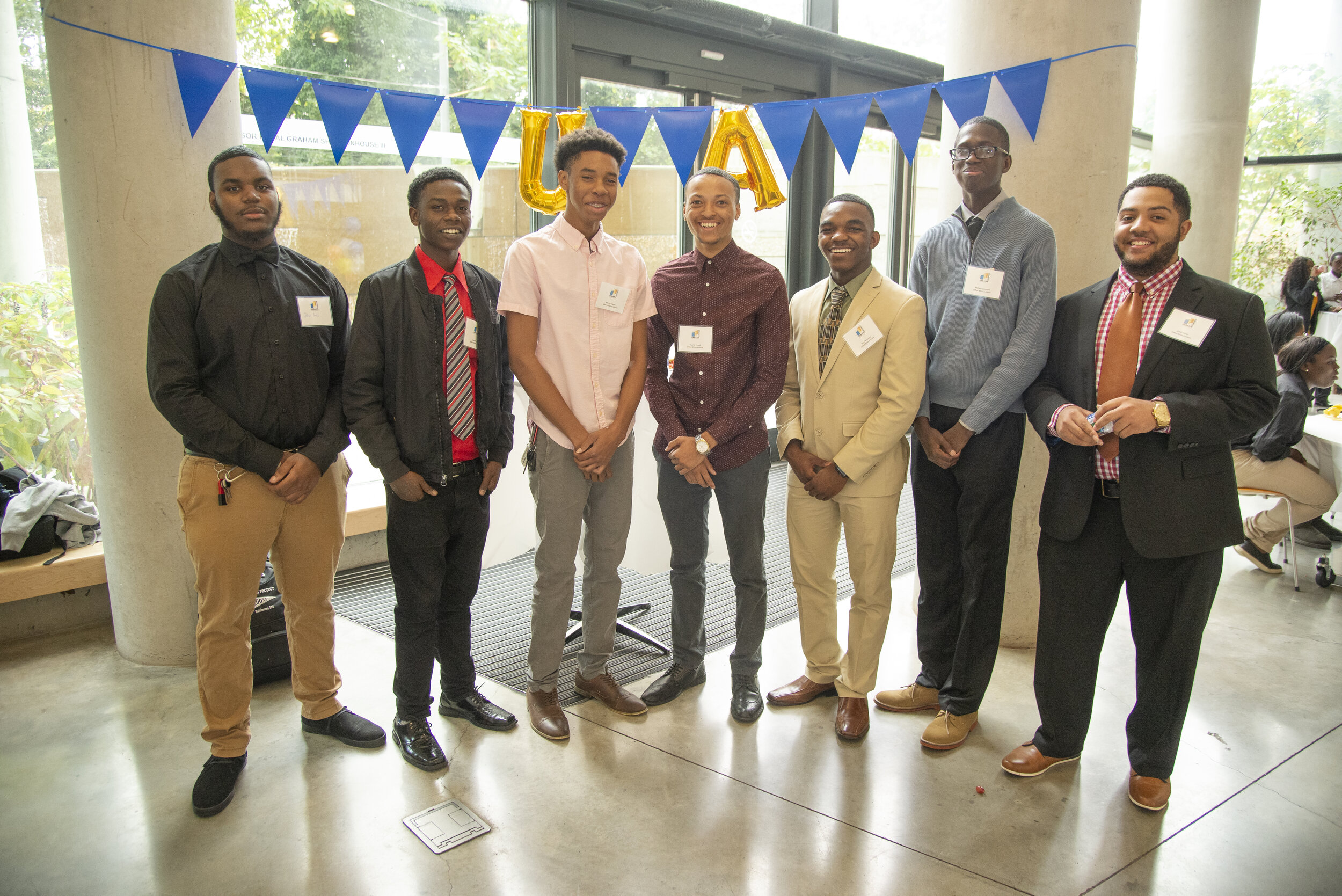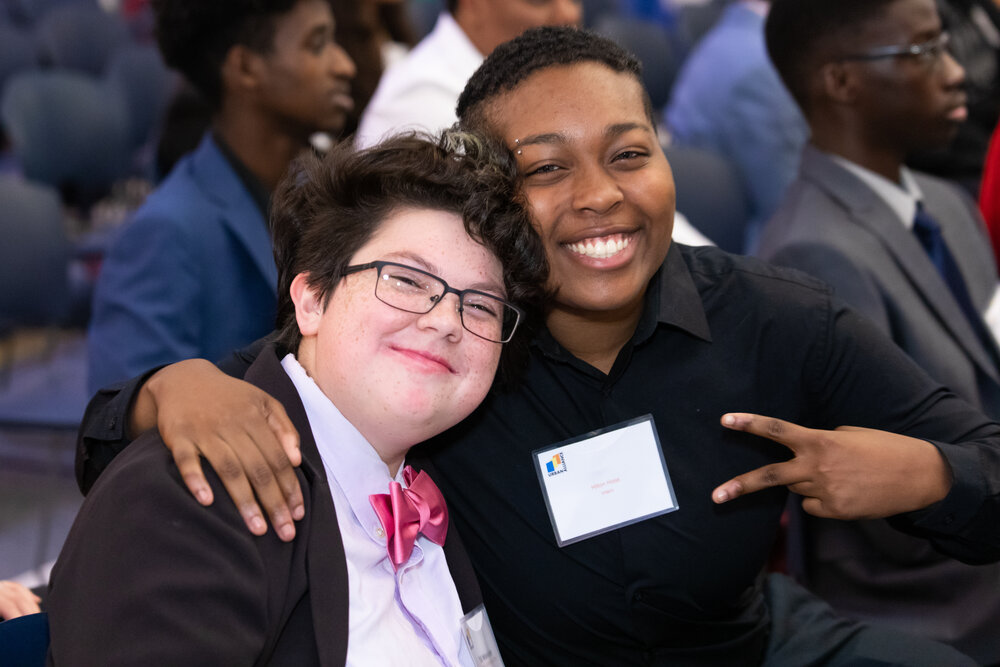Actionable Evidence
Evidence in Action: Urban Alliance

Q&A with Elizabeth Lindsey
Urban Alliance believes that all young people — no matter their race, ethnicity, or socioeconomic background — deserve equal access to the skills training, paid work experiences, and professional networks needed to achieve economic mobility. Through job skills training, mentoring, and paid internships to young people of color, Urban Alliance is building a diverse next-generation workforce.
We asked Urban Alliance’s new CEO, Elizabeth Lindsey, who joined the organization in April, about UA’s approach to using evidence to strengthen programs and address issues of equity, and about the opportunities that exist for funders and policymakers to drive more equitable workforce outcomes.
Elizabeth Lindsey
Urban Alliance

Given the opportunities for building equity and improving outcomes for young people through career and technical education (CTE) and workforce development, how is Urban Alliance working to take a next generation approach?
Urban Alliance was founded by listening to young people and what they needed to transition to successful, economically self-sufficient adulthood. Twenty-five years later, ‘students first’ is still our mantra as we work to break down barriers for students of color to build a more equitable workforce by connecting high school youth with paid internships at local employers, job skills training, and mentoring.
Over the last quarter-century, our program has evolved in response to young people’s changing needs to be the next generation of leaders. We’ve added formalized skills training using the principles of social and emotional learning so students can develop the skills employers report needing the most. We’ve added industry-specific pathways such as construction, property management, and land surveying so students have increased access to living-wage jobs in high-growth industries. And we’ve added workforce development programming, starting as early as students’ freshman year of high school, so youth can plot a pathway throughout high school pointing them straight toward their career of choice.
During the pandemic, equity gaps widened as students of color and those from low-income communities were more severely impacted by the healthcare and economic consequences of COVID-19. At Urban Alliance, we again listened to our students and let their needs guide our work. What we saw was that some 80% of students’ families relied on their internship paychecks to cover household expenses, and those paychecks needed to keep coming no matter what. We also saw the increasing importance of digital literacy and soft skills such as adaptability and self-motivation in a virtual work environment, so we redesigned our curriculum to help our students become stronger remote employees. While many internship programs shut down or contracted, we were proud that we were able to keep our students earning, learning, and on a pathway toward economic mobility.
How does Urban Alliance involve staff and students in building and using evidence to strengthen its CTE programs and address issues of equity? What advice do you have for others?
Urban Alliance is dedicated to continuous learning, constantly refining and fine-tuning our processes to spur real-time, data-driven decision-making that allows us to deliver programming of the highest-possible quality for our students. Evaluation at UA is truly an organization-wide process, and central to that work are our students and staff, especially our two-person evaluation and monitoring team.
Student-reported data and student interviews have always been a key part of our evaluation process, but in recent years we’ve moved toward a more student-centered, equitable, asset-based system in which students provide both key data points but also insight into our process.
This year, Urban Alliance is piloting a Youth Evaluation Advisory Council to center student voices in the evaluation process from beginning to end. The council, comprised of current students and alumni from each of Urban Alliance’s regions, meets regularly for focus groups to provide feedback on every aspect of the process from survey design, to language, to delivery of data collection methods, and more.
My advice to other organizations is to invest in evidence building. It’s not a nice-to-have; it’s a must-have for an organization hoping to make a measurable, equitable impact. Investing in our staff capacity and completing our first randomized controlled trial opened the door to so many opportunities for us an organization and for our students. It’s worth the investment.
Secondly, I would advise you to lean into the democratization of data within your team. Data and evaluation are only useful when they are being used to drive decision-making. Sharing your data widely with staff allows an organization to use the combined talents and insights of your team to identify gaps and strengths, brainstorm new solutions, and collaboratively tackle projects.
“My advice to other organizations is to invest in evidence building. It’s not a nice-to-have; it’s a must-have for an organization hoping to make a measurable, equitable impact.”

In a recent EdWeek article, Dallas Independent School District’s Deputy Superintendent Susana Cordova described high quality career-technical educations programs as “bright spots illuminating a path to success” because they provide students a genuine purpose for learning. This was certainly our experience in a recent engagement with Baltimore City Public Schools. How does this resonate with you?
Deputy Superintendent Cordova is right that connecting learning to a purpose – for example, teaching a student professional writing that they will use in their law firm internship – makes those lessons stick and feel much more valuable for the student. In general, students must be relatively motivated to take on an internship while balancing schoolwork and family obligations. Yet we’ve seen that motivation increases for many students upon enrolling in our program, not only because they see the immediate impact of their skills training on the job, but also because they begin to see new possibilities for their future, which is incredible intrinsic motivation. We also see this play out in students’ academic performance, as working hard on the job inspires them to bring that work ethic into the classroom.
Another part of the article that really resonates is that early access to the workforce is a form of racial equity. At Urban Alliance, we’ve always approached our work that way – opening doors to pathways and opportunities that were previously closed to youth of color. From the network gap, to discrimination, to inequitable access to social and emotional learning, barriers to the workplace stack up against young men and women of color. Add to that the self-doubt that comes from not seeing yourself reflected in the traditional pictures of success in our society and you’re left with inequities that negatively impact earnings, job attainment, and job quality for decades. If we’re ever going to make lasting changes to our workforce, it must start early, before those barriers to success become too high to overcome.

With the Biden-Harris Administration signaling an increased focus on evidence, racial equity, and workforce development, what opportunities do you see for policymakers, funders, schools, and technical assistance providers to better support organizations like Urban Alliance working on CTE and workforce outcomes?
We’re encouraged by the new administration’s focus on racial equity and evidence-based programs, and there are a lot of opportunities to recover from this pandemic while taking important steps toward building a more equitable next-generation workforce. A few immediate opportunities come to mind:
- Add employability as a measure of success for high schools: The 2016 Every Student Succeeds Act (ESSA) mandated that schools ensure students are both college- AND career-ready upon graduation, but while schools are held accountable for the first piece – college readiness – through college acceptance or enrollment targets, there is no similar accountability standard for employability, leaving schools with little incentive to prioritize work-based learning. The education system can ensure more equitable access to these opportunities by working with nonprofit partners and apprenticeship programs to integrate work-based learning at the district level. The federal government can lead the way here by implementing employability measures and standards to incentivize increased work-based learning as well as critical soft skill development in high school. Federal and/or state mandates would go a long way toward forcing schools to more effectively integrate work-based learning into the high school experience instead of its current position as an ‘add-on’ or alternative available only to select students. The federal government also has a role to play here in adequately funding CTE and work-based learning.
- Increase WIOA funding for in-school workforce development: Currently, income requirements as well as a focus on already-disconnected youth or older, non-high school youth and a focus on hard-skill-heavy apprenticeship programs make it difficult for federal Workforce Innovation and Opportunity Act (WIOA) funding to flow to work-based learning programs that work directly in schools. Easing some of those requirements and directing additional dollars toward evidence-based programs would help to bring these effective work-based learning programs to scale.
- Increasing funding for pre-apprenticeship and soft skills training programs: There is a substantial network gap and soft skills gap for low-income students of color that presents a significant barrier to career success. Harvard researchers found that 80% of job success comes from soft skills, while a majority of employers also report difficulty finding candidates with these skills year after year. Yet most federal workforce development funding is geared toward hard-skills-intensive training programs, ignoring a very real barrier faced by youth of color. Policymakers should increase funding for programs that prepare students to succeed in any workplace.
- Increasing the accessibility of post-high school outcomes data: One of the challenges in tracking young people post-high school is the sheer multitude of data points. Traditional pathway options, like college, can be tracked through administrative databases such as the National Student Clearinghouse, but employment and enrollment in career-training programs are not reported in such easily accessible, centralized databases.
Local policymakers should seek out collaboration among data systems that include education, employment, wage, and social welfare data points, such as anonymized and privacy-protected criminal justice and government subsidy statistics. Many of these data points already exist within jurisdictions, but are largely scattered among numerous agencies, and inaccessible to the public. Nonprofits, school districts, and philanthropists should collaborate and find ways of sharing data to better work together in evaluating and building city-specific initiatives and efforts. These outcomes should also be made public, increasing transparency for students, families, and communities.
“Now more than ever, the next generation has the ear of changemakers – and the tools to create that change when advocacy efforts fail.”
What advice do you have for next generation leaders in the social and education sectors?
Though the past year has been difficult on so many levels, the pandemic recovery and the resurgence of the racial justice movement present a real opportunity to work collaboratively toward a more equitable future for us all. Now more than ever, the next generation has the ear of changemakers – and the tools to create that change when advocacy efforts fail. Harnessing the power of your voices and the foghorn of social media can have an incredible impact – if you’re doing it every single day, methodically, with a clear goal in mind. At Urban Alliance, we work to create change on a systems level, but also one student at a time, one internship at a time. That method may be slower, but it is no less effective or important. Take stock of the assets and access you have and use them work toward change, whether small or large. Every inch forward is an inch closer to equity.